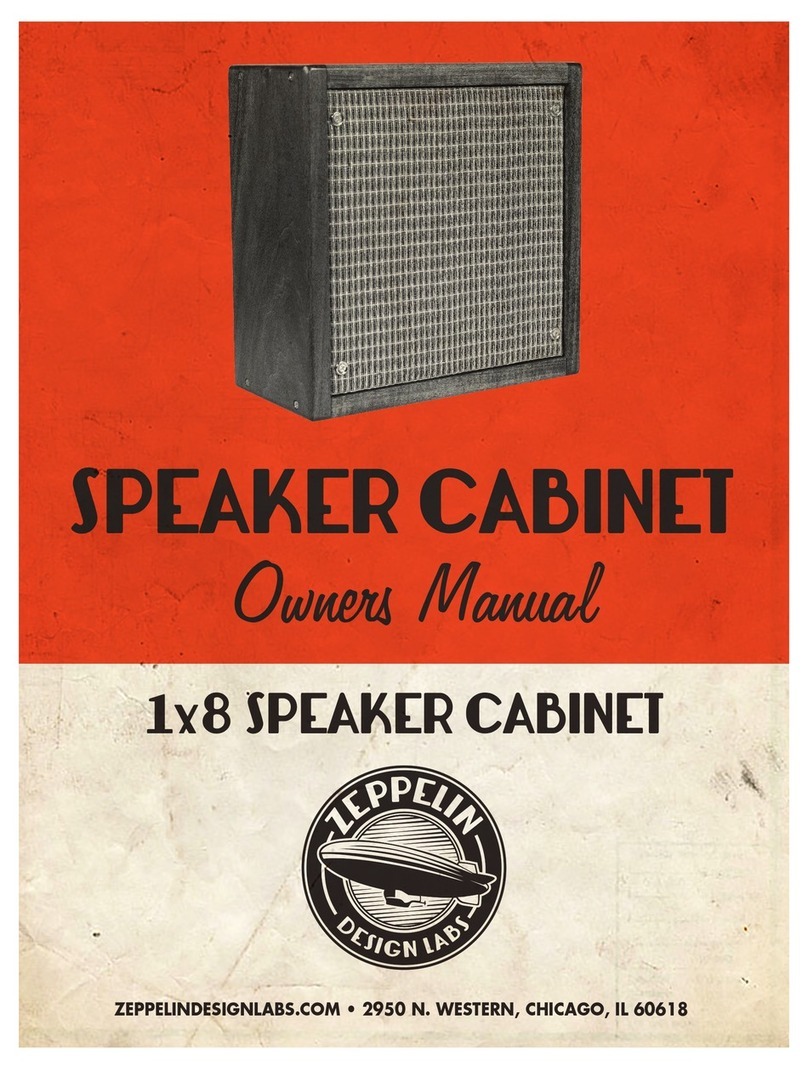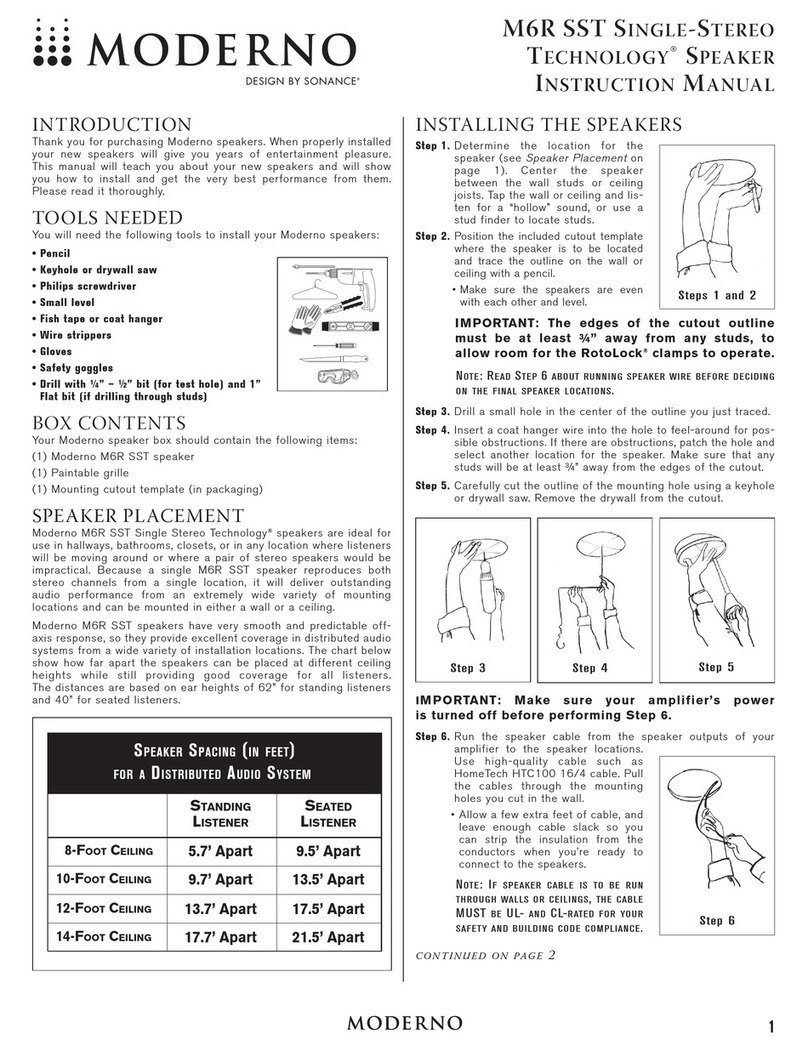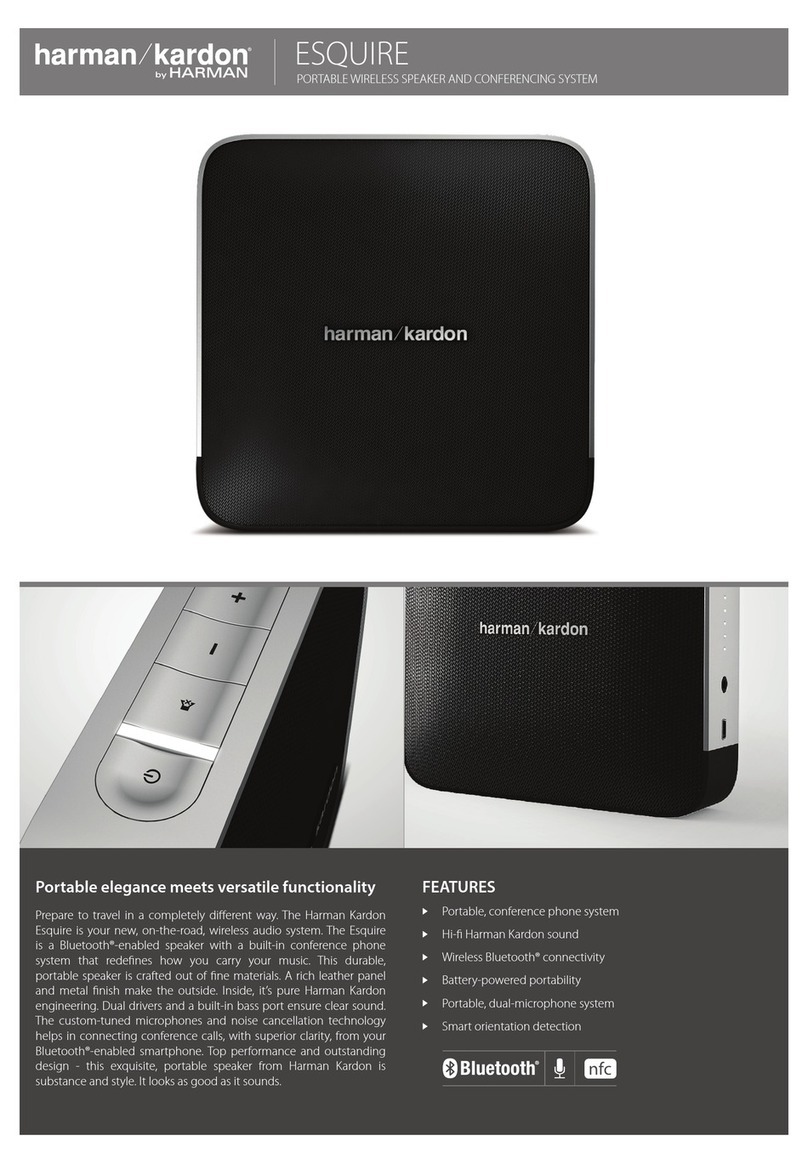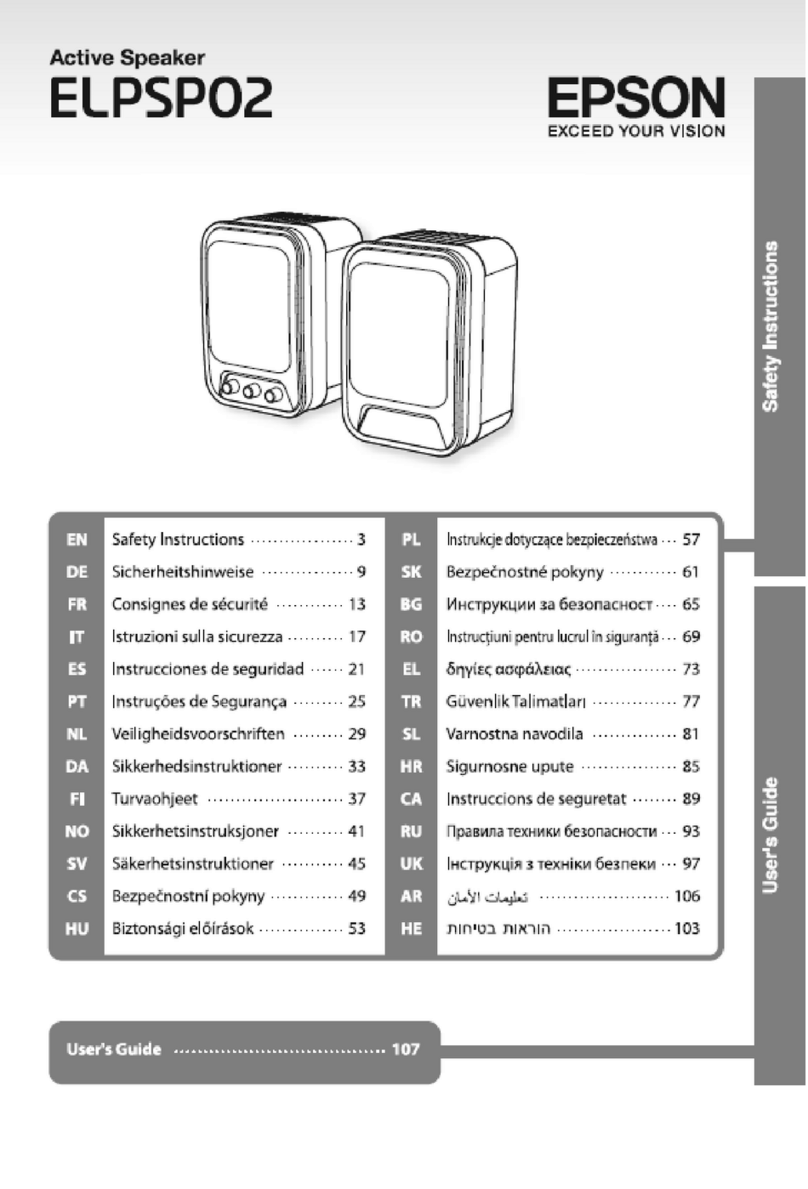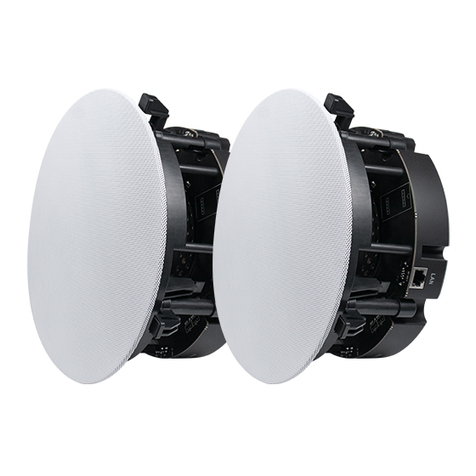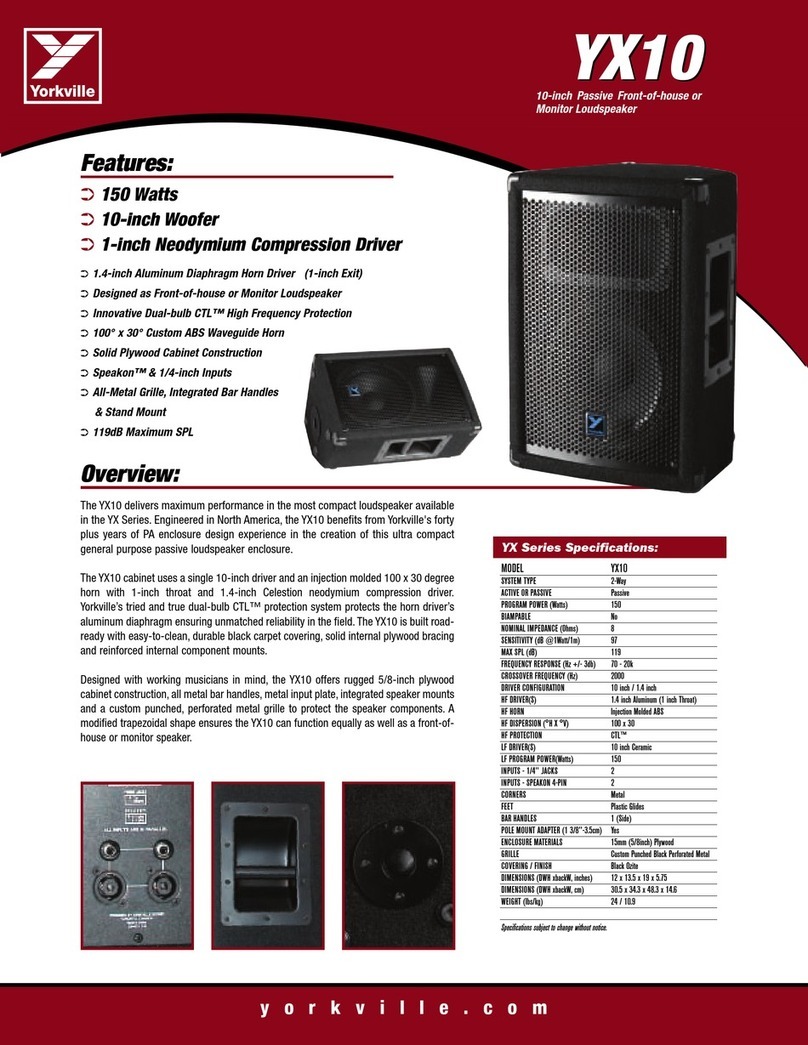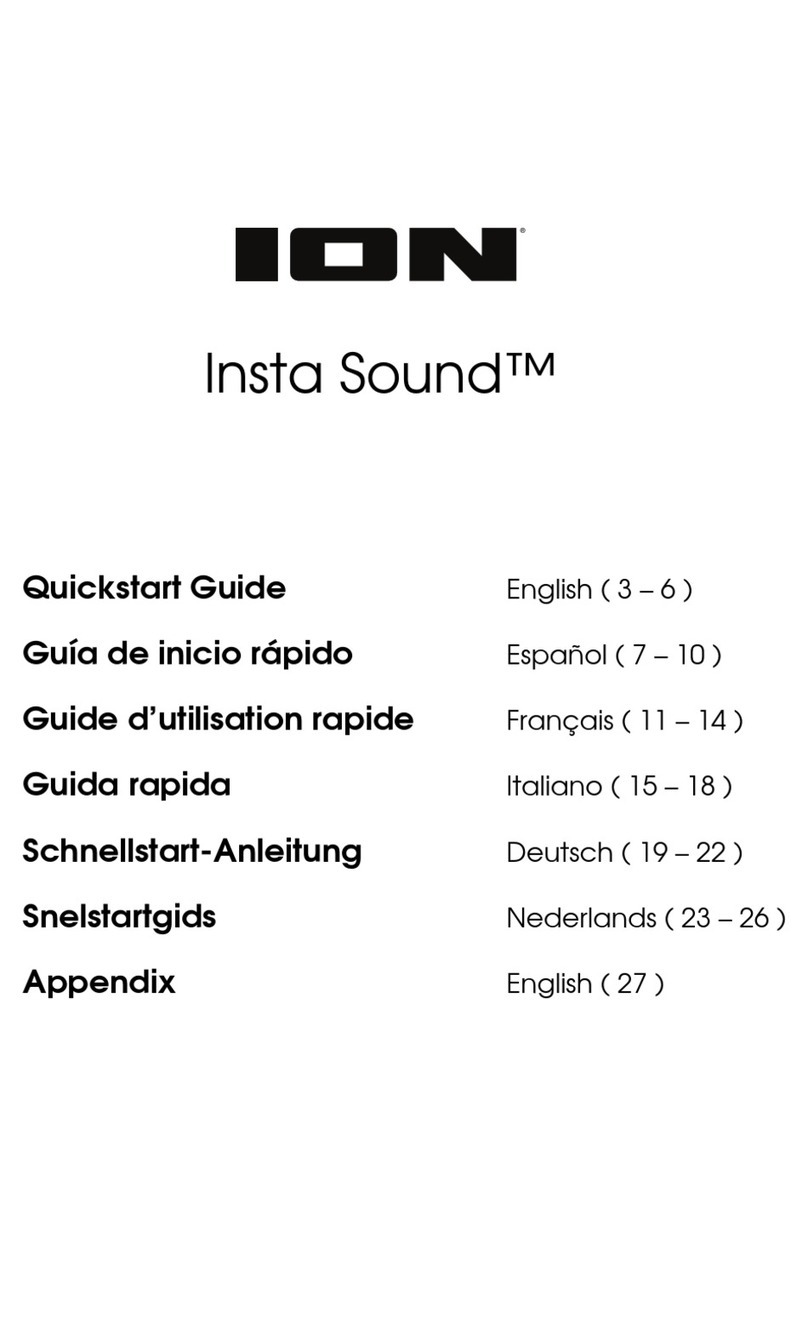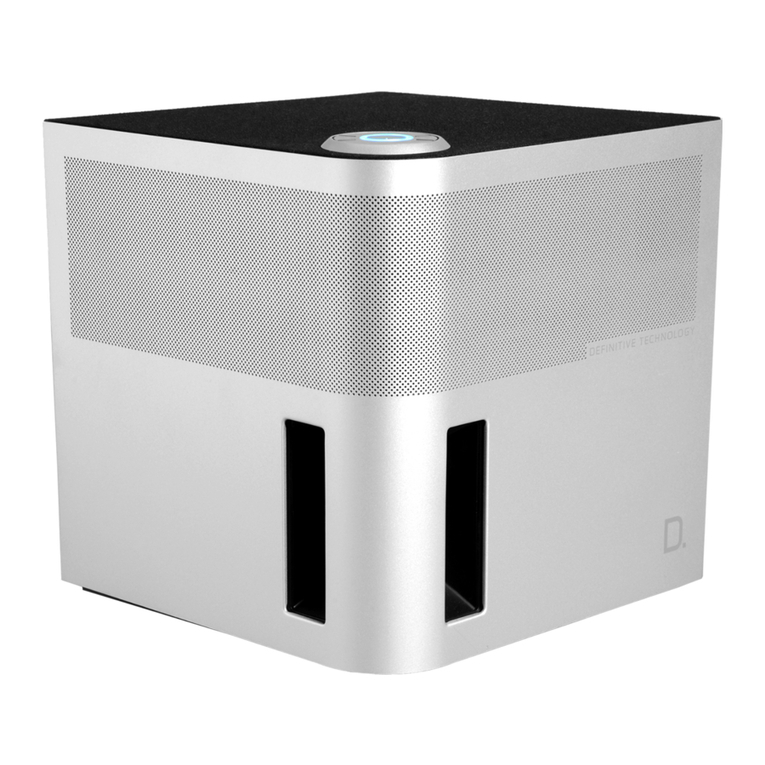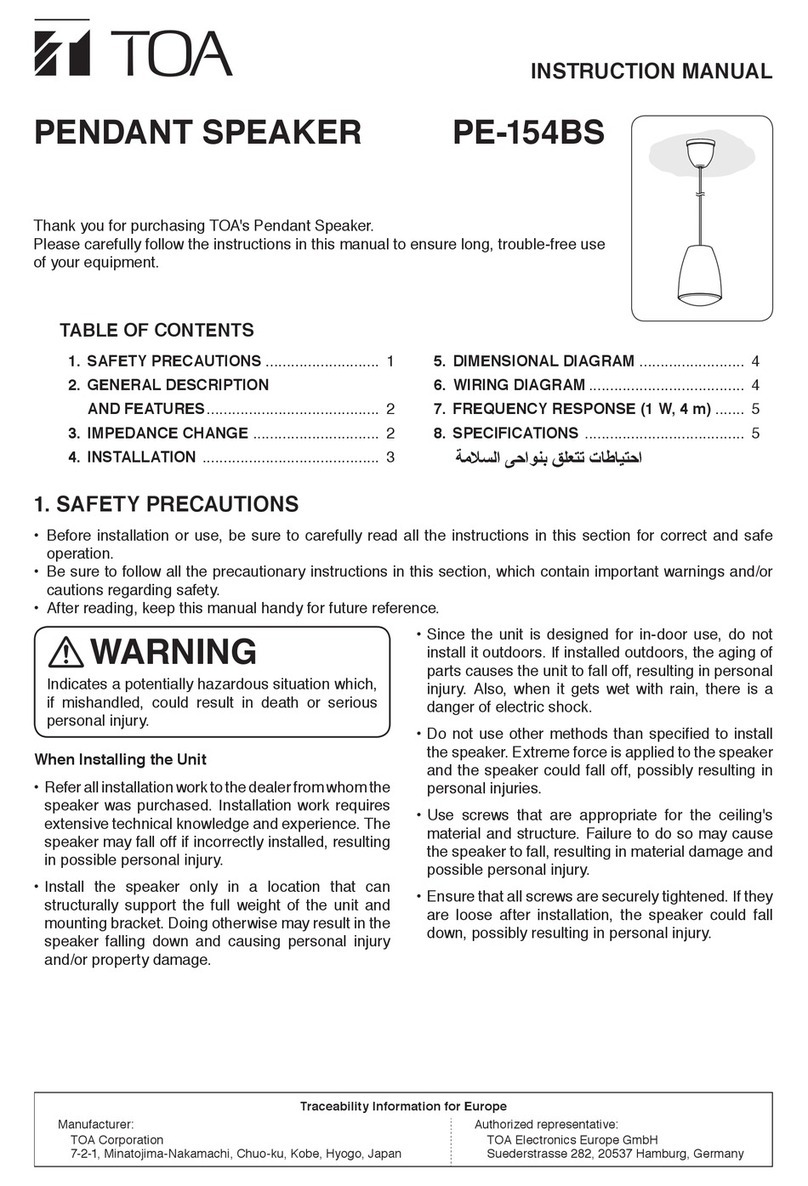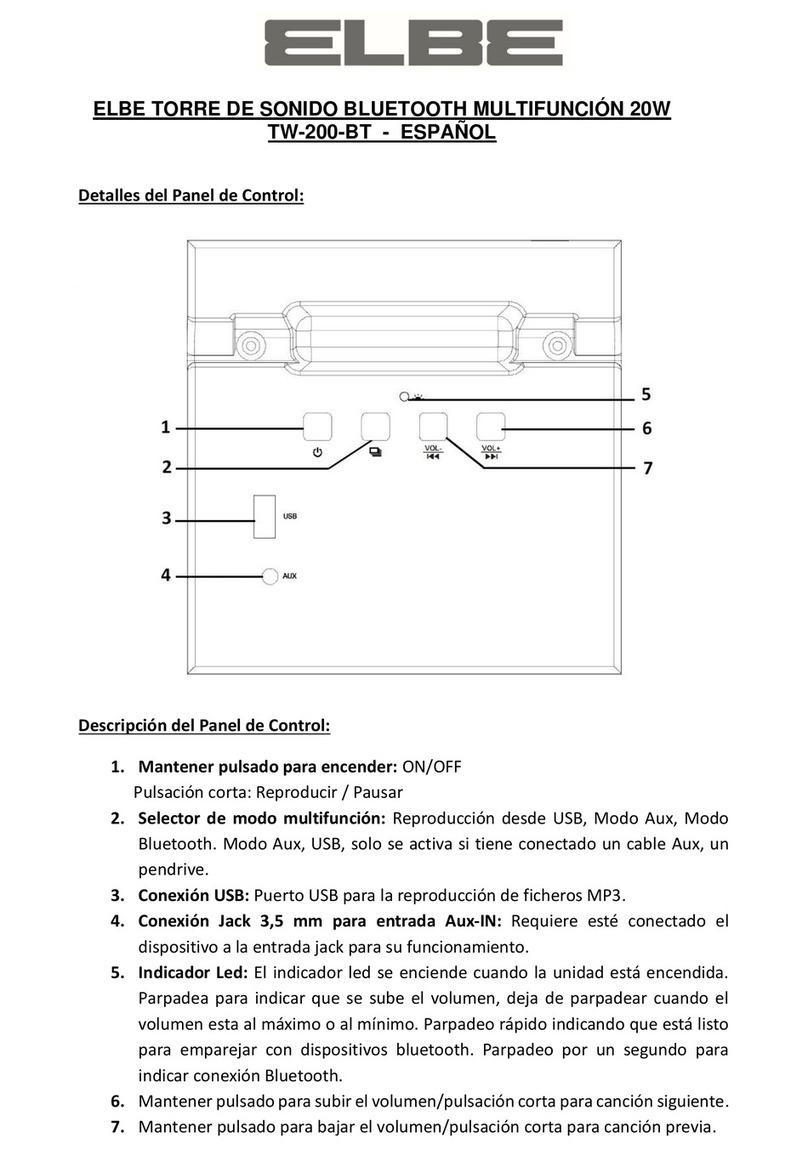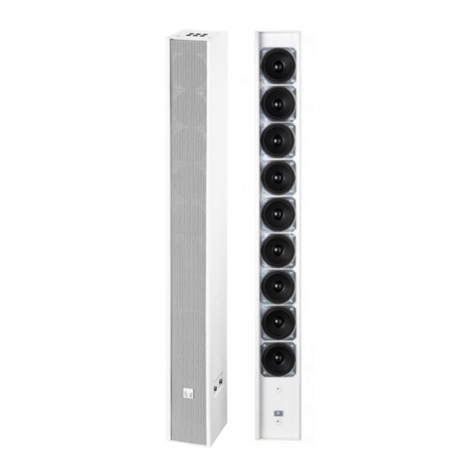Zeppelin 1x8 Cabinet User manual

Avant-Garde
AUDIO & ELECTRONIC
Products
THE PERCOLATOR
2 WATT TUBE AMPLIFIER ASSEMBLY INSTRUCTIONS
SPEAKER CABINET
ZEPPELINDESIGNLABS.COM • 2950 N. WESTERN, CHICAGO, IL 60618
Assembly Instructions
2WATT TUBE AMPLIFIER
1
x
8
SPEAKER CABINET KIT

1x8 SPEAKER CABINET
ASSEMBLY INSTRUCTIONS
INTRODUCTION ...................................................................................................... 3
CAUTIONS, WARNINGS & DANGERS....................................................................... 3
WHAT YOU WILL NEED ............................................................................................ 3
WHAT’S IN THE BOX................................................................................................ 3
BUILDING THE CABINET ........................................................................................... 8
A WORD ON COUNTERSINKS .............................................................................. 9
ASSEMBLING THE BOX.......................................................................................... 9
FINISHING THE BOX ........................................................................................... 24
BUILDING THE BAFFLE BOARD................................................................................. 29
MAKING THE SPEAKER CABLE ................................................................................ 42
PUTTING IT ALL TOGETHER ..................................................................................... 47
USING YOUR NEW SPEAKER CAB .......................................................................... 50
BREAKING IN ..................................................................................................... 50
DRIVING CAPACITY............................................................................................. 50
REPLACING THE SPEAKER .................................................................................... 51

3
INTRODUCTION
Thanks for buying a 1x8 Speaker Cabinet kit from Zeppelin Design Labs! We hope you will have fun
assembling this kit, followed by many years of musical enjoyment. We think we’ve produced a pretty
nice product, and we’d love to hear your feedback. Send an email, or post on the ZDL forum.
Note your kit includes a serial number sticker for you to attach to the speaker frame. Reference this
serial number whenever you contact us for assistance.
Please read this manual ALL THE WAY THROUGH BEFORE STARTING! You will discover a number of
issues concerning timing or sequencing that you might not realize if you just start out.
CAUTIONS, WARNINGS & DANGERS
This is a simple, beginner’s soldering and carpentry project. If you have never handled a
soldering iron or a router before, this project will give you a little beginner’s practice.
This instruction guide is full of CAUTIONS,WARNINGS, and DANGERS. These are actually three
distinct things:
1. CAUTION indicates a potentially hazardous situation that, if not avoided, could result in minor
or moderate injury, like cutting or burning your finger.
2. WARNING indicates a potentially hazardous situation that, if not avoided, could result in
death or serious injury, like shocking yourself at a wall receptacle.
3. DANGER indicates an imminently hazardous situation that, if not avoided, will result in death
or serious injury. This word is limited to use in the most extreme situations, like electrocuting
yourself or cutting a finger off.
Follow the instructions and stay safe!
WHAT YOU WILL NEED
To build and finish your Speaker Cabinet, you will need the following:
1. Tools
• Drill: cordless, corded, or drill press
• Drill bits: 1/16, 9/64, 7/32
• Orbital Sander (optional) or sanding block
• Small router and 3/16” radius roundover bit, or other small detail bit (optional)
• Countersink (see “A Word On Countersinks”, on page 9)
• #2 Phillips Screw Driver or screw gun
• Small straight screw driver
• Awl, or nail and small hammer.
• Staple gun: manual, electric, or pneumatic

4
• Sharp pencil
• 12” Ruler
• Bar clamps, minimum 12” opening, two of them
• Utility knife or X-Acto knife or scissors
• Heat gun, or very hot hair dryer
• Soldering Iron, good quality, 15-50 watt
• Wet sponge or dry solder-cleaning pad
• Wire stripper / cutter, to strip 16-gauge wire
• Needle-nose pliers
• Some sort of clamp or fixture to hold parts while soldering. Your bar clamp might work.
2. Supplies
• Solder, rosin core for electronics
• Good quality wood glue such as TiteBond II or III
• Masking tape
• Good quality wood filler such as DAP Plastic Wood (optional)
• Sandpaper, either discs for your orbital, or sheets for your block: 60, 120, 220, 320
• Very small can of MinWax Dark Walnut Wood Finish (oil-based stain) or equal
• Small can of MinWax Wipe-On Poly, clear satin, or equal
• A small amount of flat black paint, spray or can
• Mineral spirits, for cleanup
• Clean rags
WHAT’S IN THE BOX
Table 1 on Page 6 shows a complete parts list of everything that
should be present in your kit, followed by nice color pictures
of each part. Print the parts list and carefully go through the
kit, identifying every part. Besides verifying that nothing is
missing, this will acquaint you with the parts and their names.
If ANYTHING is missing, or damaged beyond use, first double-
check: we double-checked before sealing the box at our lab! If it’s
still missing, EMAIL US right away at support@zeppelindesignlabs.
com. Include your serial number (on a little round sticker in the bag of hardware). If we are reasonably
convinced that we goofed and shorted your kit, we will get replacement parts in the mail ASAP. If you
lose or damage anything, we will be glad to sell you replacements. The unusual or custom components
can be ordered from us direct. For more common parts, like screws, you should just go to a local
hardware store.
There are three components to your 1x8: the cabinet, the baffle board, and the hookup cable. You can
complete these in any order, but we think the process will be most efficient if you work on them in the
order in which we present them here. In any case, READ THE WHOLE THING THROUGH BEFORE
TIP: Empty
the parts of the kit onto a
cookie sheet or into a big fruit
bowl, NOT onto the cluttered
workbench, or onto the living room
carpet! This will protect you from
losing tiny parts.

5
STARTING! The baffle takes less than an hour to assemble, plus paint drying time. The cable takes
about 15 minutes. The cabinet takes about 3 hours spread over 2-3 days.
Figure 1: What’s In The Box?

6
Table 1: 1x8 Speaker Cabinet Bill Of Materials
Loose in the box:
Part # Description Notes Qty
BB08 Baffle Board for 8” Speaker 1
CA04.1 Cabinet Top/Bottom Shorter parts 2
CA04.2 Cabinet Sides Longer parts 2
CA04.3 Cabinet Cleat 4
CA04.4 Cabinet Port, solid 1
CA04.5 Cabinet Port w/Hole 1
GC02 Grill Cloth Black/Silver/Beige 1
LS08 Loudspeaker 8” 1
TM02 Paper templates 2
In Hardware Bag:
Part # Description Notes Qty
CB11 Zip Wire 16/2 6” 2
FT03 Foot ½” x ¼” 4
J2 1/4” Mono Phono Jack, Female Input 1
JA07 1/4” Mono Phono Jack, Male Cable 2
NU03 Tee Nut #8-32 Baffle 4
PL20 Jack Plate 1
PL30 Serial Number Plate 1
SC13 Machine Screw Pan Head Philips #8-32x3/4 Speaker 4
SC61 Wood Screw Flat Head Philips #6x1-1/4 Cabinet 24
SC65 Sheet Metal Screw Pan Head Slotted #4x5/8 Jack Plate 4
SC66 Sheet Metal Screw Pan Head Philips #6x5/8 Feet 4
WA06 Flat Washer #8 Speaker 4
WA10 Countersunk Washer #8 Baffle 4

7
Figure 2: Parts Illustrations
CA04.5 GC02 LS08 CB11 FT03
BB08 CA04.1 CA04.2 CA04.3 CA04.4
J2 JA07 NU03 PL20 PL30
SC13 SC61 SC65 SC66 WA06
WA10

8
BUILDING THE CABINET
The cabinet is a beginner’s woodworking project, but it will take several hours over several days to
complete! Take your time, be careful, and you should produce a lovely, great sounding solid wood
cabinet to be proud of.
We are going to show you how we make the prefinished 1x8 here in our lab. There are as many
carpentry and finishing techniques as there are carpenters and finishers. If you prefer to do something
differently, go for it. If you have an experienced friend to work on this with you, take his or her advice
over ours.
Following is a parts diagram of the cabinet. The part numbers are keyed to Table 1: 1x8 Speaker
Cabinet Bill Of Materials, page 6.
Figure 3: Exploded Parts Diagram

9
A WORD ON COUNTERSINKS
The overall success of this project depends somewhat on your ability to accurately countersink the
wood screws, so that the heads lie just below the surface of the wood, but no deeper. There are several
ways to do this:
• Buy a #6 pilot bit (9/64) with matching fluted countersink and stop collar, or an all-in-one #6
pilot / counterbore / countersink tool.
• Buy a countersink bit.
• Use a ¼” drill bit in a drill press.
The first (shown to the left) is my favorite: very accurate and easy to use. The
second, a countersink bit (shown to the right), is next best. If you don’t do a
lot of wood working, you may not want to invest in these tools. This leaves
using a ¼drill bit in a press. To do this, first drill through with the 9/64 bit,
then countersink with the ¼bit, carefully and gradually adjusting the depth
of plunge until the full diameter of the bit just barely cuts into the wood. The screw should then pull the
head down into the wood and just below the surrounding surface. Practice setting the depth on a scrap
of pine until you like the results.
ALWAYS provide a 1/16” pilot in the holding piece of wood, and keep the clutch on your screw gun
set low when driving, or the screws provided are likely to spin out or break.
ASSEMBLING THE BOX
1. Fitting the Wood Parts (Part # CA04.1&2): Note that the shorter wood pieces (Part # CA04.1)
are the top and bottom and the longer pieces (Part # CA04.2) are the sides. Arrange the four
pieces of wood as shown. If you have a preference for the appearance of grain, color, knots, etc,
flip the parts around this way and that until you like the way they look. 4
4

10
2. With the pencil, label the parts where it won’t show so you can easily fit them together again later.
Put the labels all towards the front.5
3. Marking the Jack Plate6: Install the 1/4” input jack (Part # J2) into the jack plate (Part # PL20).7
Fit the jack through the hole in the Port (Part # CA04.5).8Use the pencil to mark the four screw
holes on the Port.9Put a pencil mark on the Port and a matching dot of masking tape on the Jack
Plate so you can install the plate later in the same orientation.10
5
8 9
10
6 7

11
4. With scissors or blade and ruler, cut out the templates provided with your kit.11 Tape the templates
to the cabinet bottom, and to the right-hand side (as you face the front), and to one of the ports.12
If the templates do not match the wood size PERFECTLY (it happens), line up the FRONT EDGE of
the template to the FRONT EDGE of the wood, and center it along the length of the wood. Don’t
worry about the REAR edge.
5. With the awl, or a nail and small hammer, carefully poke a hole into the wood at the center of
each cross hair.13 Remove the template from the right side, and tape it to the LEFT side and mark
that piece as well.14 Re-use the Port template to mark the other Port.15 Poke holes centered on the
four marks you made around the port hole.16 Remove all templates and tape. Keep the templates
close at hand for reference.
11 12
13 14
15 16

12
6. Use the Cleat template to poke two holes in one side of each cleat (Part # CA04.3).17 As long as
you are careful, as shown, there is no need to use tape.
7. Installing the Cleats (Part # CA04.3): Place one of the sides
face down on your worktable. Stand one of the Port pieces
(Part # CA04.4 or 5) on edge and use it to space the cleat in
from the edge of the side.18 (Place the cleat with the nail-marks facing
up.) Use the same port piece to space the cleat down from the end of the cabinet side.19 Note
the cleat is cut a little short, so check it at both ends and center it on the cabinet side.20 This is
much easier than it sounds. Finally, check the offset from the edge once more. Place the cleat a
little extra-far-in from the edge. Hold the cleat firmly in place with one hand.
17
18 19
20
TIP: See our
online video for a
demonstration of how easy
this is.

13
8. Grab your drill with the 1/16 bit set to stick out about 1-1/8”, and drill two pilot holes at the
marks, through the cleat and into the side.21
9. Label the cleat and the side, so you can put it back in place later.22 Set the cleat aside.
10. Repeat steps 7 - 9 for the remaining three cleats.23
11. Re-drill the eight pilot holes in the cleats with the 9/64
bit and countersink them using your chosen method.24, 25
21
22
24 25
23
TIP: You will get
cleaner holes on the inside
face of the cleat if you can go
straight through into another piece
of wood.

14
12. Run a bead of glue down the back of one cleat.26 Spread it out into a uniform, thin layer with a
stick. Place two of the #6x1-1/4 wood screws (Part # SC61) into the countersunk holes until they
just protrude through the glue. TRIPLE-CHECK YOUR LABELS TO ASSURE THAT YOU ARE PUTTING
THE CLEAT IN THE CORRECT SPOT! THIS IS VITAL TO A DECENT OUTCOME! Place the screw
tips into the mating pilot holes in the cabinet side.27
13. Grab your screw gun (fitted with a NEW #2 Philips driver and the clutch set low), press down
hard and drive the two screws home.28 If the clutch spins out early, increase it ONE STEP AT A
TIME just until the cleat goes down firm to the cabinet side. DO NOT OVERTIGHTEN as the screw
will either spin out or break. Wipe excess glue away with a damp rag.
14. Repeat steps 12 - 13 for the other three cleats.29 No need to allow dry time before continuing.
26 27
28
29

15
15. Stand up all four pieces of wood on their FRONT edges on your clean, smooth, flat work surface.30
Dry-fit them together. Use a bar clamp to snug the pieces together as shown.31 Hopefully your
clamps have plastic pads on the bearing surfaces. If not, DO NOT OVERTIGHTEN the clamps or
you will mar the wood. It just needs to be snug.
16. Pick one corner and line up the pieces of wood as carefully and accurately as you can. Be sure
the faces (the sides touching the table) are flush to each other at the joint.32 If the parts are a tiny
bit uneven on the back face (that is, the side facing you), that’s okay; don’t worry about it – you
can send it out later.
17. When you are satisfied with the alignment of the corner, add the second clamp as shown and
tighten both clamps moderately to securely hold that joint in place for drilling.33
Take your time with this step. The overall neatness of your cabinet depends on getting this step
right.
30 31
32
33

16
18. Fit your drill with the 1/16” bit, sticking out about 1-1/8”. At the corner you lined up, drill two
holes at the nail/awl marks, through the side, and into the mated wood piece.34
19. Continue to the other three corners, loosening the clamps and lining up the corners one by one.35
Drill a total of 8 holes.
20. Disassemble the four pieces. Still with the 1/16” bit, drill four blind pilot holes about ½” deep in
the Bottom where marked36, and four holes ½” deep around the Port jack hole.37 Do not drill the
holes at the ends of the Ports at this time.
21. With the 9/64 bit, re-drill the eight small holes you drilled in the sides, and countersink them.38
You will get cleaner holes if you can drill straight through and into a piece of plywood or a board.
34
35
36 37
38

17
22. Inspect the inside faces of the wood pieces for splinters or “blowout”: bits of wood standing above
the surrounding surface. Clean these off with a bit of 120-grit sandpaper.39
23. Dry-fit the four sides as before, with the front edges down on the table. Apply some wood glue to
one end of the TOP. Smooth the glue out until it uniformly coats the end.
24. Fit two wood screws into the appropriate two holes of the mating SIDE piece.42 Guide the tips into
the little pilot holes in the TOP piece. Set a clamp across the box as shown, barely snug. Carefully
line up the joint as before.43
39
40 41
42 43

18
25. Add the second clamp right across the joint and apply moderate pressure to hold the joint securely
for screwing.44
26. With a #2 Philips screwdriver or cordless screw gun, press in hard and drive the two screws
barely snug.45 You will tighten these later. Note you are setting these screws into end grain, and
it may need a lower clutch setting than you used on the cleats to prevent the screw from spinning
out. DO NOT OVERTIGHTEN!
27. Now attach the BOTTOM to the same SIDE, holding the joint secure with a clamp while driving
the screws barely snug.46-50
44
45
48 49
50
46 47

19
28. Now apply glue to the remaining exposed ends of both the TOP and BOTTOM. Fit four screws
into the remaining SIDE and maneuver them into all four little pilot holes. Align, clamp and screw
the joints (barely snug) one at a time.51-54
51 52
53 54
25. Add the second clamp right across the joint and apply moderate pressure to hold the joint securely
for screwing.44
26. With a #2 Philips screwdriver or cordless screw gun, press in hard and drive the two screws
barely snug.45 You will tighten these later. Note you are setting these screws into end grain, and
it may need a lower clutch setting than you used on the cleats to prevent the screw from spinning
out. DO NOT OVERTIGHTEN!
27. Now attach the BOTTOM to the same SIDE, holding the joint secure with a clamp while driving
the screws barely snug.46-50
44
45
48 49
50
46 47

20
29. Check the box for overall squareness: measure diagonally across the cabinet to see if it measures
the same in both directions.55, 56 If not, clamp the baffle board into one acute corner as shown.57
This will pull the whole box into perfect square. Now tighten all eight cabinet screws on the sides.
If necessary, use the other clamp to hold the joints tight as you drive the screws home.
Time to decide if you want the ports to be removable or not. If you glue them in place, the box will
be considerably stronger and more durable, but if you ever want to service the speaker, you will
have to remove the baffle from the front, which weakens the rigidity of the baffle. See “REPLACING
THE SPEAKER”. It really depends on how likely you are to want to try lots of different speakers in
your cabinet. If that’s you, then do NOT glue the ports in place at this time. If you can’t imagine ever
replacing the speaker unless it has died of old age, then glue in the ports.
30. Installing the Ports (Part # CA04.4&5): The solid port goes in the rear bottom; the port with a hole
goes in the rear at the top.58 If gluing, put some glue on one long edge, and on the back of the
port where it will touch the cleats. Do NOT put any glue on the ENDS of the ports! It will only
squeeze out and make a mess. Whether using glue or not, tap the ports tightly into place.
55 56
57
58
Other manuals for 1x8 Cabinet
1
Table of contents
Other Zeppelin Speakers manuals
